6th November 2023
Listen
Listen
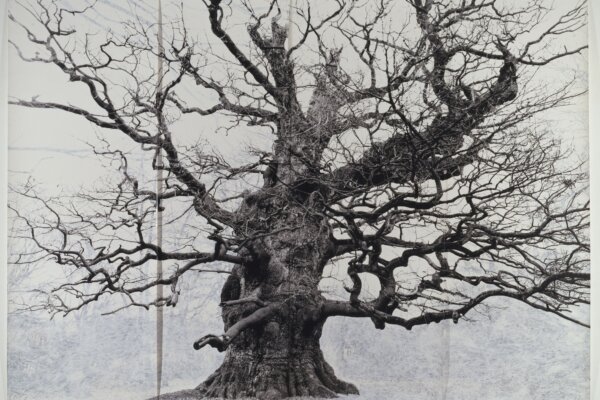
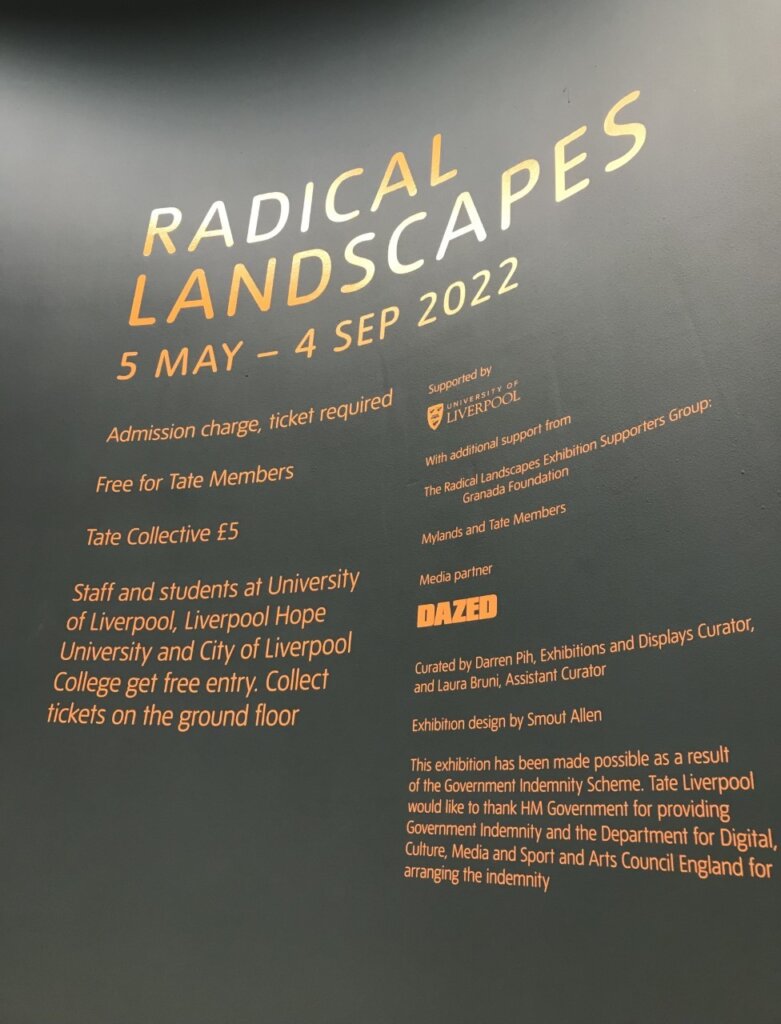
Living up to its billing as ‘radical’, ‘Radical Landscapes’ goes left of field(s!) to challenge perceptions of landscape art as quaint and pastoral. While acknowledging the greats at the start of the gallery (e.g. Constable, Flatford Mill [1816-17]), many later pieces challenge the status quo: think Peter Kennard’s (1980) Haywain with Cruise Missiles. The pastiche propaganda plonks nuclear weaponry in the centre of a peaceful Home Counties field, responding just as much to the particular Cold War moment as John Constable’s earlier (1821) The Hay Wain.
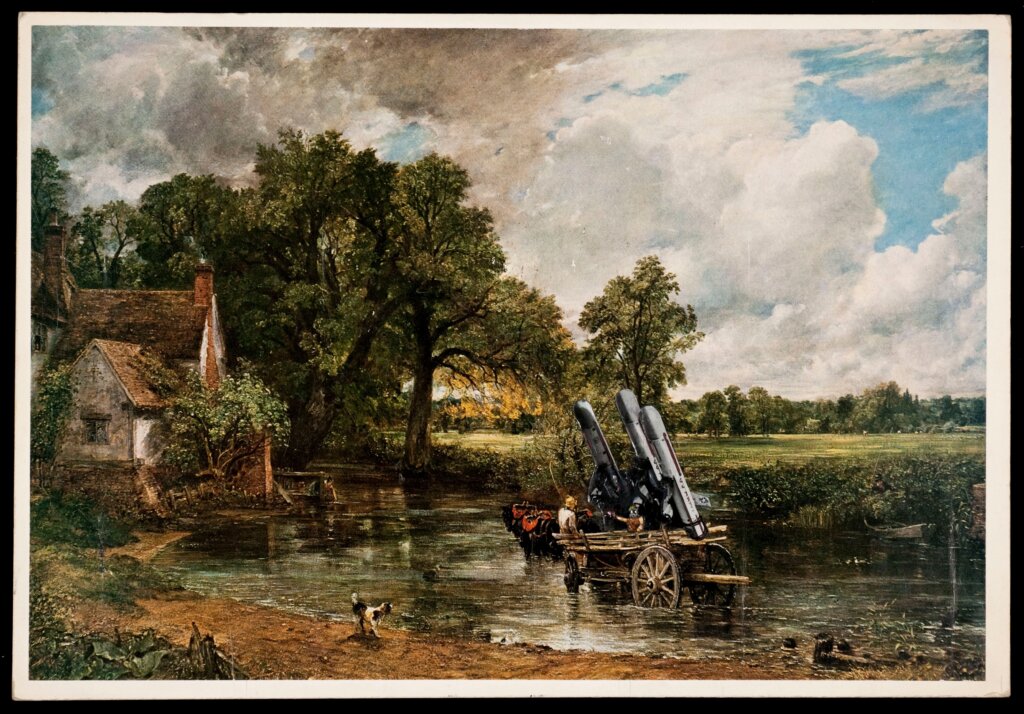
Having a Field Day: Peter Kennard’s (1980) Haywain with Cruise Missiles
From the outset, a major theme of the gallery is the politicisation of our surrounding countryside. This comes across in a cluster of artworks related to the (catchily-named) Kinder Scout Mass Trespass of 1932, and an entire side-room devoted to showcasing artefacts from the ’Eighties Greenham Common Protest. As well as elucidating important social history, these artworks still resonate today – even in 2022, we only have the freedom to roam a mere 8% of the English countryside.
The women who rise like lions after slumber / distinctly in disturbing number
An excerpt from Dinah Livingstone’s 1982 poem, written as part of the Greenham Common ‘Embrace the Base’ Protest of the same year
The exhibition may look at artworks spread across the past century, but many are directly relevant to today. These include the photos of Nigel Dickinson, snapped from the ’Nineties to now, for instance NHS Not HS2, taken last year (2021). Meanwhile, Carol Rhodes’ (1995) oilpaint on hardboard Airport recalls the controversies over additional runways at Gatwick and Heathrow which rage to this day.
‘Radical Landscapes’ also features 2 previously unseen, special new commissions by the artists Davinia-Ann Robinson and Delaine Le Bas. Interrogating, respectively, the repercussions of colonialism for Black, Brown and Indigenous communities, and climate change, both speak to the present moment.
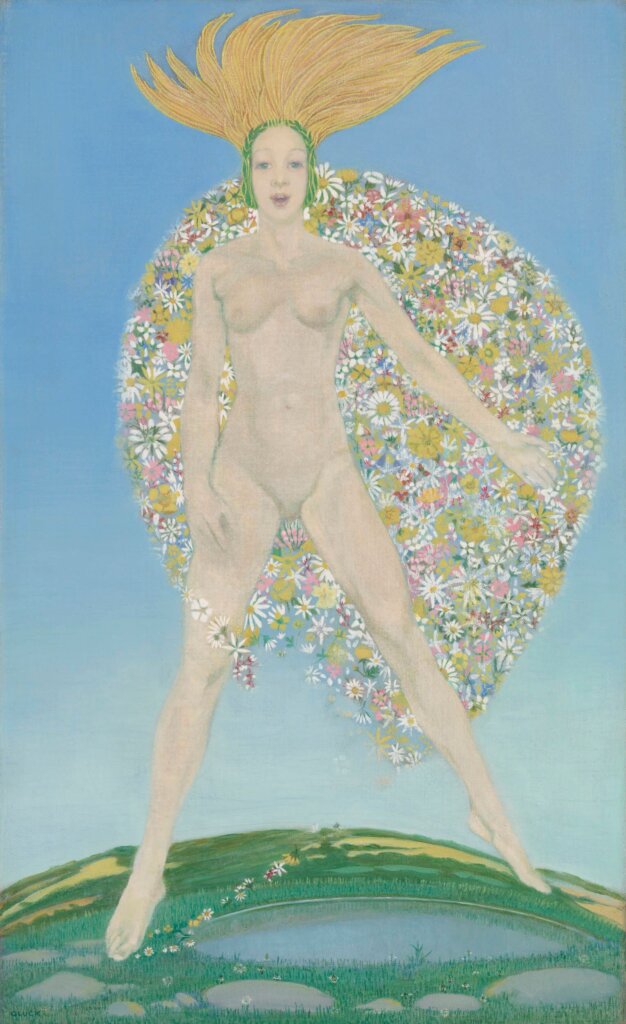
Crocus Cloak Us: Gluck’s Flora’s Cloak (c. 1923)
The previously-mentioned Le Bas has English-Romany heritage, and several of the other featured artists come from minority backgrounds and/or marginalised communities. This includes Gluck, a non-binary pioneer of the queer art scene – their (1923) Flora’s Cloak oil painting is mythical and enigmatic. The careful curation of Darren Pih and Laura Bruni allows a range of non-mainstream voices to be heard…
… sometimes quite literally! The 150-plus exhibits on display are fully multimodal, covering, among other mediums, painting, photography, sculpture, poetry, textile, film, and – strikingly – psychedelic slide projection. This latter comes courtesy of Gustav Metzger, who fled Nazi Germany as a child. His mesmerising, kaleidoscopic screens in Liquid Crystal Environment (1965; remastered 2005) are meant to represent the shifting social mores of the Swinging Sixties.
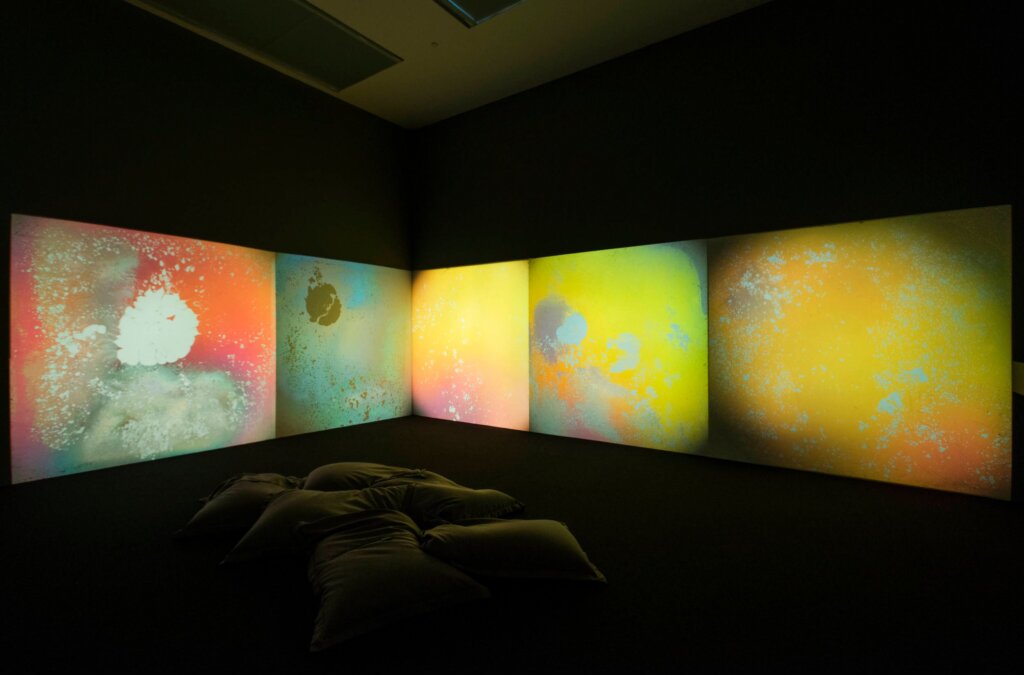
The Crystal Amaze: Gustav Metzger’s Liquid Crystal Environment (1965; remade 2005)
Another multi-sensory highlight is Back to the Fields (2015-22) by Ruth Ewan. Inspired by France’s experiments with a ‘Republican Calendar’ between 1793 and 1805 (which trialled 10-day weeks and only 5 ‘festival days’), it is formed of 360 items representing the changing of the seasons. Walk clockwise round this living installation to see the seasons turn, breathe in the calming phytoncides, and feel at ease among the trees!
Alongside the usual handy info plaques (e.g. below), ‘Radical Landscapes’ also includes several art-adjacent orange blurbs, penned by professionals and experts. The contributors include environmental activists, PhD students, and the writer Damien Le Bas Jr, winner of the prestigious Somerset Maugham Award for his 2018 novel The Stopping Places: A Journey Through Gypsy Britain. These blurbs offer informative new perspectives to the artworks they accompany.
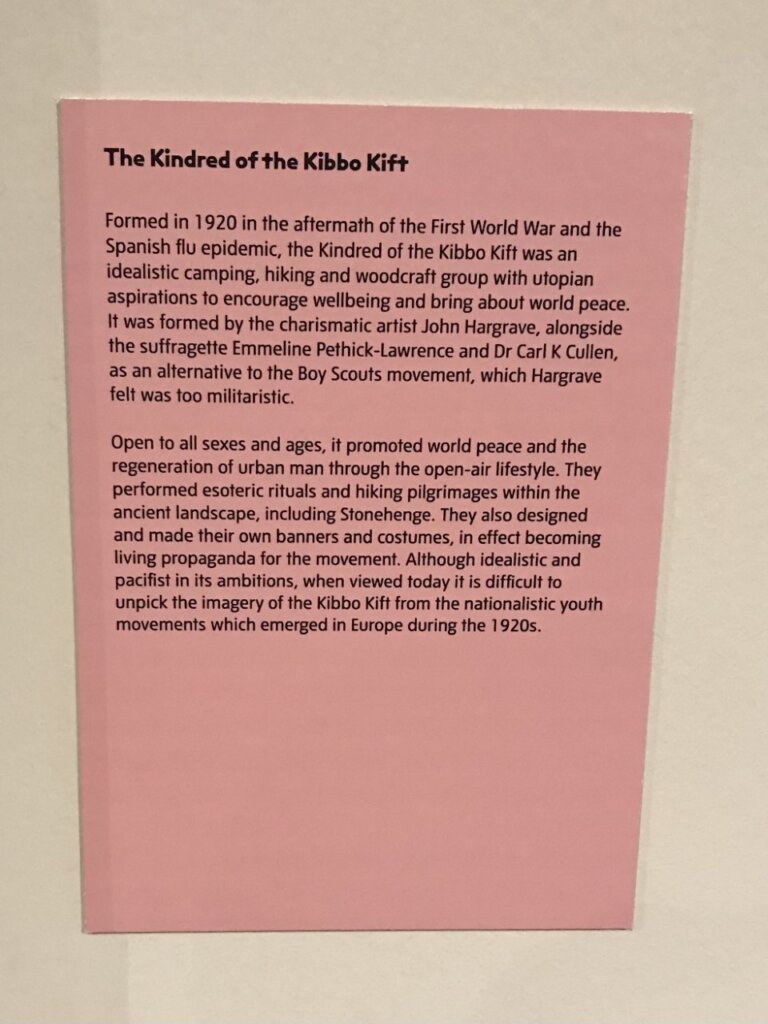
As well as mixing mediums, ‘Radical Landscapes’ also combines the up-and-coming, home-grown with the well-known of the art world. In the latter category are the Turner Prize-nominated Ingrid Pollard, and the infamous Barbara Hepworth, who has contributed the slate sculpture Two Figures (Menhirs) [1964].
And finally… it’s free! While a visit to the exhibition will cost a member of the general public £13.50, staff and students of the University of Liverpool will not be charged an entry fee. For more information, visit tate.org.uk.
Radical Landscapes is at Tate Liverpool until 4 September 2022. For more information, visit the website, or call 0151 702 7400.
Featured image: Majesty (2006), Tacita Dean. Tate. Presented by Tate Members 2008